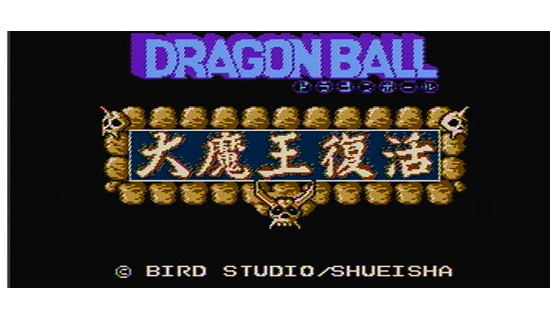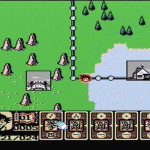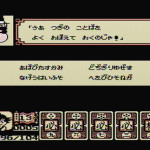As was eluded to at the end of my article about the last Dragon Ball game on the Famicom, Dragon Ball: Shen Long no Nazo, this game franchise is about to enter what I consider to be a dark place. It won’t be immediately obvious with this game, but it will certainly open the door to where things are headed. Dragon Ball: Daimaou Fukkatsu picks up basically where Shen Long no Nazo left off in the Dragon Ball story line (though many story elements have been significantly altered from the source material), at the beginning of what is commonly referred to as the King Piccolo saga. Goku returns home to the Kame House after having fought against Tien Shinhan in the Tenkaichi Tournament, only to find his buddy Krillin dead. So begins the adventure!
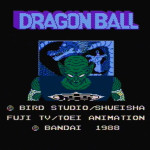 | 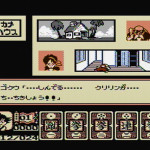 |
| This is actually the version of the title screen that you see if you let the game sit for a little while. That’s a pretty great image of King Piccolo! | Krillin…Krillin? Krillin!! |
And as it happens, “adventure” is a very appropriate word to describe this game. Certainly not because it’s a very exciting game, but rather because its gameplay is significantly different from its predecessor: It’s a mash-up of a traditional menu-based adventure game and a card-based RPG! This may seem like a bit of an odd mix, but the game is divided into three parts: Moving around a world map to various destinations, interacting with the environments at the destinations, and the battles themselves. Movement on the world map is controlled by the aforementioned cards. Goku moves the number of spaces corresponding to the number of dots appearing on the card that the player chooses to use.
Unless the player has arrived at a new destination when their movement ends, they are given a choice of face-down cards on screen. When they choose a card, there are a few different possibilities: King Piccolo (Piccolo Daimaou) will result in a battle (more details on battles shortly). Fortuneteller Baba can result in a short game that involves playing a card with a value greater than or equal to her own, or she may just give you a completely new hand (this can be either great or terrible, depending on whether you’ve been saving up high-numbered cards or not). Shen Long can either heal you or exchange a card that you don’t want for a new one. Lastly, Mister Popo does absolutely nothing.
Battles are this game’s most important use of cards. Each card has three parts: Dots (If you have a higher number of dots than your opponent you get to attack, and vice versa), a kanji character in the middle that represents what type of attack will take place (kick, punch, Nyoi Bou, run away, and special moves (which will lead to use picking another card at random that decides the specific special move that will be used)), and a kanji for a number at the bottom (if you don’t get the attack, this is the value that will be used for defense). The name of the game here is pick a high number value card to win!
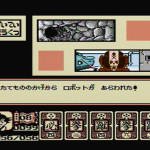 | 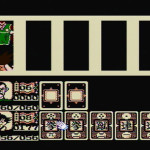 |
| The Guardian Robot just sort of appears and scares the crap out of you! | Tao Pai Pai is not nearly as much of a pain in this game as he is in the original story. |
When you arrive at a destination via the world map, you’ll find what to me was the strangest thing about this title: You’re suddenly playing a traditional adventure game. You have a menu window that allows you to choose between directions to move, items to use, actions to take, and characters to talk to. And like most old adventure games you have to do exactly the right things in the right order. Otherwise you simply can’t progress in the game, and often making the wrong choices will cause you to die! I didn’t experience too much of this given that I used a guide (I don’t have too much patience for old adventure games), but there is one particular element of this game that would make this incredibly annoying. We’ll get to that shortly!
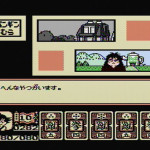 | 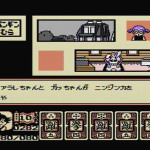 |
| “There’s a weird guy” | Ninjinka, what the hell are you doing here?! You’re not supposed to be in this part of the story! And you’re getting your ass kicked by Arale! |
There are a few things that makes playing this game an exercise in frustration. The most notable one is regaining health, whether it be because of health lost in battle or simply maxing out your HP because you just leveled up. There are only two ways to get health, and both of them happen completely at random: Fight an enemy and hope that they drop a Senzu bean (this definitely doesn’t happen very often), or get a Shen Long card and hope that he opts to give you health instead of switching out one of your cards. Shen Long is definitely the more reliable source of regaining health, but the problem is that the card that you choose after moving seems to be more heavily weighted toward being either King Piccolo (meaning a battle) or Fortuneteller Baba (meaning either her silly game or switching your entire hand). At best this will result in you fighting many more battles than you had hoped to (the only bright side to this is that it’s forced grinding for levels), and at worst in your death from being worn down over too many random battles with no chance to heal! What’s the worst thing that could happen when you die though? Well, you could completely lose all of your progress! This game uses a password system to save instead of a battery backup. So if you are manually copying them down, make sure that you have all 28 characters correct, or you’re starting from the beginning! I’m not entirely certain what the first Famicom cartridge to feature a battery backup was, but they’d certainly implemented them in NES cartridges overseas by this point.
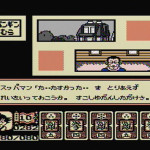 | 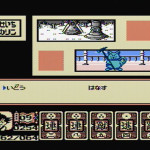 |
| You’re welcome Superman (I have no idea)! | Climbed all the way to the top of Karin Tower just to see Karin sama, and…all he does is give me useless information. |
To keep things in balance, there are a couple of good points to this game as well: It’s extremely easy to follow if your Japanese reading level is not too high. Nothing is written in kanji except for some values on the cards themselves, and all of the small amount of text featured in the game is very to the point. Perhaps it was because I was forced into a lot of random battles, but I didn’t have to grind very much to become significantly higher leveled than the enemies. By the last area I was at level 13, but I was basically an unbeatable god by level 10. Though he still had more HP than me, I managed to one-shot King Piccolo with a special move. The sprite art in this game is actually quite nice, particularly when compared to its predecessor. Some memorable scenes from the anime/manga are even quite lovingly recreated. Lastly, the game is quite short: I would estimate it to be about 6 hours on average.
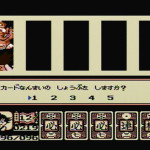 | 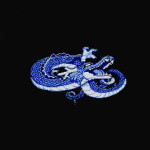 |
| Konpei, a weird elephant god that was an original addition for this game. | He may not be the right color, but this is still a pretty great image of Shen Long! |
It’s rumored that the card-based battle system came about from the staff playing Trump. This is very unfortunate, as this must have been one of the earliest examples of a card-based RPG (which would become quite the trend in Japan, as they still exist today). I’m of the mind that it would have had a better future if the developers would have just stuck to greatly refining the action/adventure game feel that they went with in the previous game. Akira Toriyama himself actually played this game with his wife over the course of two days. He commented in an issue of Weekly Shounen Jump that “It was pretty rough dying immediately from a game over, but it was faithful to my source material and I was very excited about the differences. They weren’t all that far removed from it, and I really liked Konpei”. Konpei was some sort of elephant deity that was the guardian of a later area in the game, who I actually felt was quite a weak addition. As was previously mentioned, this game featured several story points, areas and characters that were not at all featured in Toriyama’s source material. Though I do agree with Toriyama that none of it was too far removed from something that he might have written in Dragon Ball.
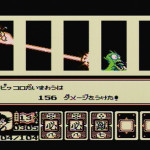 | 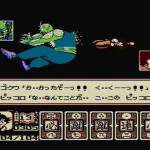 |
| Where I one-shot King Piccolo with a Kamehameha. | A fairly impressive image of the scene from the anime/manga where King Piccolo was defeated. |
I’m not a big fan of traditional adventure games nor card-based RPGs, so I could only recommend this game to anyone who really liked either of those genres or, like me, is very interested in the history of Dragon Ball video games. Bandai and Tose will continue to crap out these card-based Dragon Ball RPGs for a little while, and I will continue to wish that they had taken a different path.
